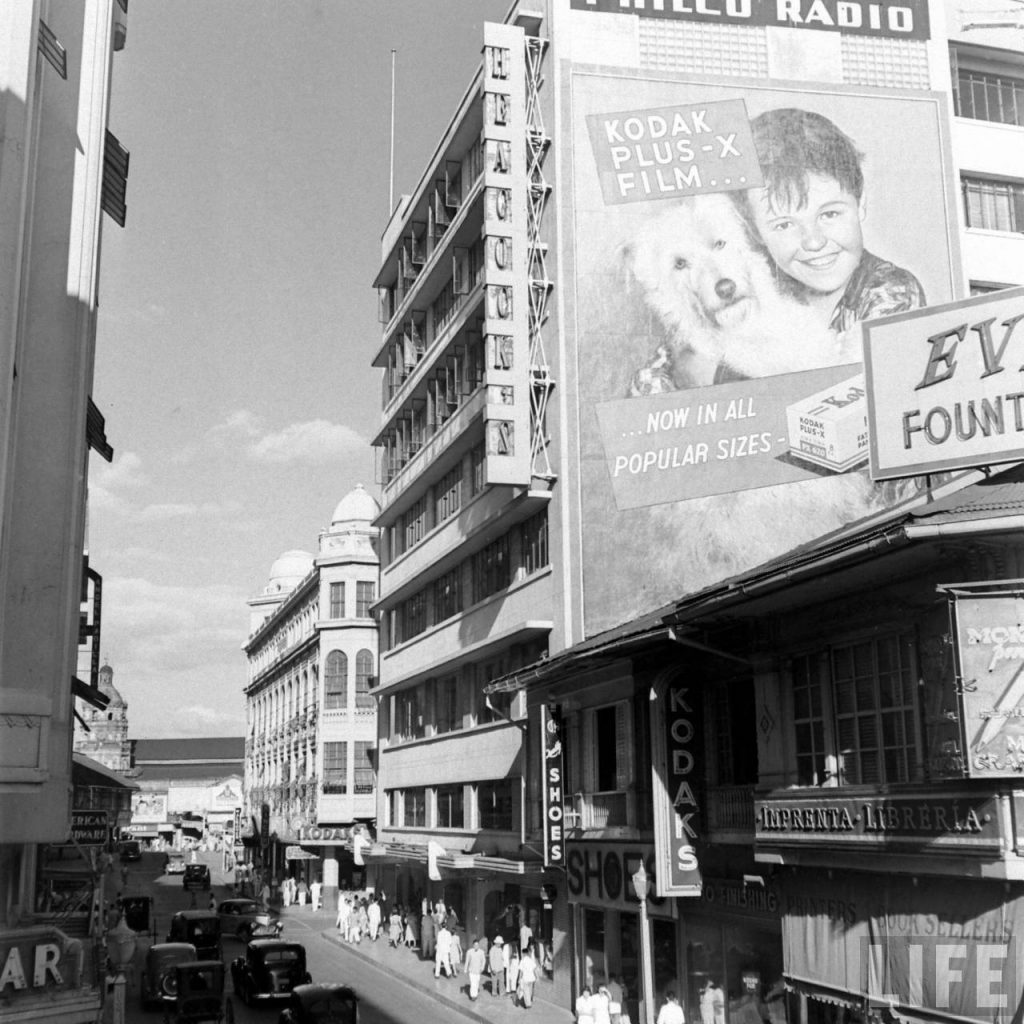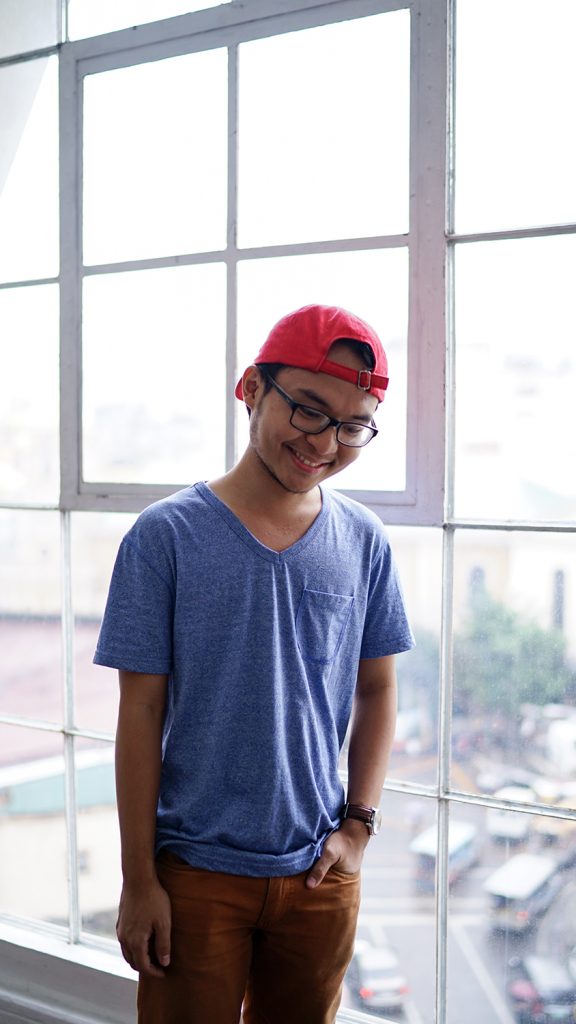There have been better days in the street of Escolta.
For a street less than a kilometer in length, Escolta—in Binondo, a few minutes’ walk away from the Carriedo LRT station—may be one of the few streets in Manila deeply steeped in cultural history. Escolta was the place to be back in its pre-World War II heyday. It’s a street of many of the country’s firsts: the first shopping mall, the first elevator, the first movie house, and so on. The buildings fronting the street were once the tallest in the country, and were prime examples of what buildings looked like from decades back: art deco, beaux-arts, and neo-classical architecture.
Historically significant, yes, but the importance of Escolta today is another thing entirely. The dust has settled on the rooftops and walls of the buildings. What was left of the glamour of Manila’s Queen of Streets during the ′40s and ′50s, as it was called during that time, had slowly seeped out.

But movements from the past few years have put Escolta back on the map. Social media had a big part of it; from bulleted lists of go-to places in Manila to stories of El Hogar and the Manila Metropolitan Theater calling for action, there’s been a collective awakening on the part of the digital-savvy youth. The city once invisible to our consciousness has now entered the fray, all thanks to a community made up of artists, heritage conservationists, and people interested in our collective past who have made the initiative to revive Escolta.

“The movement is basically composed of Escolta Commercial Association, Inc. (ECAI, the organization of building owners in the Escolta neighborhood), the 98B (artists), the Heritage Conservation Society and ICOMOS Philippines (represented by Architect Dominic Galicia), and us, the youth volunteers,” explains Stephen Pamorada, a heritage conservation volunteer who has given tours of Escolta in the past. “There used to be the Heritage Conservation Society-Youth, out of which evolved a group that now focuses on the Escolta, called the Escolta Volunteer Arm.”
What personally drew Stephen to Escolta was a fascination for history and a respect for his neighborhood, himself a resident of Binondo. “These structures and places hold decades and of memories and layers of stories that are continuously being told and have yet to be told. And here we also continue to make stories at present.”
“These structures and places hold decades and of memories and layers of stories that are continuously being told and have yet to be told. And here we also continue to make stories at present.”
The formed community today, the day we’re visiting, is gearing up for the Escolta Block Party, a celebration of heritage and community where sections of the street will be closed off to give way to live music, vendors, and revelry. It is a party, after all.
It Started On A Saturday
2012 was the year the artist-led initiative Mark Salvatus founded 98B COLLABoratory in Cubao, but July of the same year they moved to the Mezzanine floor of the First United Building in Escolta. If Escolta was to be revived, so to speak, it would have most likely been done by the hand of artists. And so they did.
Artist and 98B member Marika Constantino calls the move an opportunity that presented itself at the right place and the right time. Although 98B is not into heritage preservation per se, the ways Escolta has flourished has been made possible by art. “We’re still in the realm of contemporary art but then indirectly, we touch on the narratives of the street. We’re treating Escolta as our background, as our backdrop for our projects.”
One of their projects, the Escolta Saturday Market, became a hotbed for creative labels to showcase their projects as well as for vintage item-seekers to spot a sweet find. Today, the Escolta Saturday Market has been changed to a daily space rented out by the same eclectic vibe as before, known as The HUB. The vendors range from heritage memorabilia to fashion-forward fare. Currently beside it is Fred’s Revolucion, a bar that houses a wide selection of local and foreign beers and another personality in itself.
Beyond The HUB, 98B’s pursuits in art have led to other projects, such as the Pan///Project Space, which showcases art right on the ground floor of the Panspico Building, where the building’s old store front used to be. “For you to have something art-related, it doesn’t always have to be in a museum or art gallery,” Marika explains. “It can actually exist through a small gathering, a talk, or even a meal among creatives. That’s the kind of notion we want to promote.”
“For you to have something art-related, it doesn’t always have to be in a museum or art gallery. It can actually exist through a small gathering, a talk, or even a meal among creatives. That’s the kind of notion we want to promote.”
This juxtaposition of a rising creative community operating between the walls of decades-old buildings is interesting to say the least. Is there beauty to be found beyond the street’s vintage charm? When asked about the allure of Escolta to creatives, Marika points out the street’s rich history and architectural landmarks as fresh perspectives for the modern artist. “It’s impossible for creatives not to be inspired or be motivated by the things that you see, by the stories that you hear, the details that you’re confronted with every time you walk. Every time I come here [in Escolta], there’s always something new.”
New People, Same Old Street
Viva Viva Escolta, a 2016 QCinema short, is a story of the departed seeking peace while wandering the neighborhood of Escolta. Beyond its plot, the charm of the film relies on its sense of place, plotting the narrative in key landmarks in the streets framed through the camera using Dutch tilts. “The slanted angle helped establish Escolta as an otherworldly place,” explains Janus Victoria, director of Viva Viva Escolta.
And otherworldly it is. Viva Viva Escolta was shown during the block party at the First United Building Community Museum. Inside are documents of the personal history of the family that owned the building, but in the same space are clippings of stories made about Escolta from the past decade or so. On another, art that has Escolta as its focal point. Layers and layers of the past and the present paint a picture of a nonlinear historical perspective—one that doesn’t view the past as a throwaway relic, but also as a foundation for the present. This is what makes the movement of Escolta palpable and real.
“Escolta is lined with visions of great artists that were made real,” Janus answers, when asked what drew her to the street. “Recently I heard an official from Manila City Hall react negatively to protests against the tearing down of Rizal Stadium. In a nutshell, he said culture is not enough reason to combat the economics of things. But there is such a thing as pride of a place. Thankfully, Escolta still has a lot of it. Those buildings tell me just how far we can go. These structures are reminders to aspire more as Filipinos. How do you put a price tag to that?”
Janus adds, “One also needs a different perspective to believe that it can achieve its new goal today: not to revive the past, but to find new purpose and meaning.” Outside the film screening is the block party, where I see a few familiar faces and I hear loud, beautiful music permeating the air like settling dust. I have only been visiting Escolta for a few weeks now, but I expect to come back.
“Escolta is lined with visions of great artists that were made real.”
People have always come and go in the streets of Manila, but the buildings remain, and so does its carried history. There have been better days in the street of Escolta, Manila’s Queen of Streets. Things don’t always stay the same, and that usually means decay. These days at Escolta, it means progress.
This article was originally published in our January-February 2017 issue and has been edited for web. View the full issue online here. For physical copies, our delivery locations are listed here.
Photography by Alexis Lim

